Posts Tagged ‘world war ii’
Operation Colour Scheme. The Fire Service’s Top Secret D-Day Mission.
2024 marks the 80th anniversary of D-Day. On 6th June 1944, the Allied Forces launched one of its biggest military operations – they came by land, sea and air and would eventually bring about the liberation of Europe and the end of World War II.
But as D-Day was being planned, more and more equipment was stockpiled in the South of England and needed to be protected, and that’s why the National Fire Service Commanders were tasked with a top secret mission of their own – Operation Colour Scheme.

Operation Colour Scheme: Protecting the Overlord Invasion’s Infrastructure
Operation Colour Scheme, a little-known but vital aspect of the Fire Service’s activity in World War II, involved moving 11,000 firemen and women and over 1,200 fire fighting vehicles to the South of England to protect resources being stored in rural areas.
In 1943, the German bombing offensive was at a lower level and so it was decided that fire fighting resources could be moved from areas in the North and the Midlands to areas in the South to cover sites that now required a higher level of protection, including:
- Logistical supply sites
- Harbours linked to the D-Day invasion – most notably coastal areas of East Sussex and an armada of ships in the lower reaches of the Thames
- Ammunition dumps
- Petrol pipe lines
The Colour Scheme – and what each colour meant
And to aid planning, England and Wales were split into 12 regions – with each region given a colour to represent the level of risk each region faced:
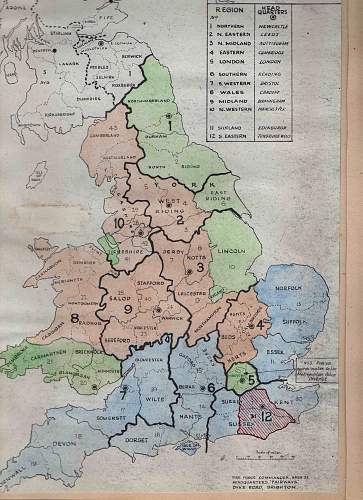
War Relics Forum
- Regions shaded Purple and Blue needed to be reinforced to above their maximum strength – the Purple regions were most impacted
- Regions shaded Green needed to be reinforced up to their maximum strength
- Regions shaded Brown were areas from which resources could be drawn from to provide for Purple, Blue and Green regions
The crucial role of the Fire Service during World War II
The war years proved to be the busiest for our Fire Brigades with fire fighters on the front line protecting communities during Air Raids and as part of Operation Colour Scheme.
Fire fighters were issued with one basic uniform; a steel helmet, rubber boots, trousers and waterproof leggings – although shortages saw some stuck with just Post Office uniforms!
The first air raid on London took place on 7th September 1940 and this would mark the start of The Blitz – where London endured bombings for 57 nights in a row. Most of the air raids took place at night, meaning fire fighters spent long hours extinguishing fire or dealing with explosions.
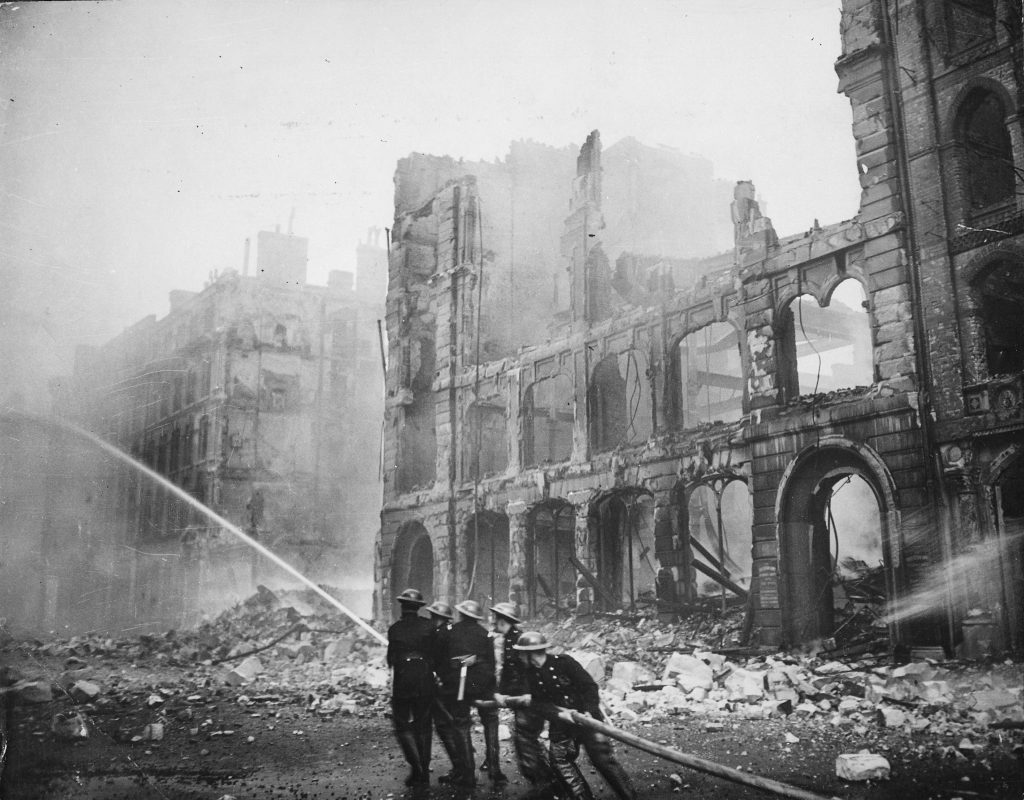
New York Times Paris Bureau Collection, Public domain, via Wikimedia Commons
In the first 22 nights of air raids, fire fighters had fought nearly 10,000 fires – and for many, this was their first experience of fire fighting…
And by 1943, over 70,000 women had enrolled in the National Fire Service, many becoming fire watches and drivers and managing the communications network.
Britain’s Prime Minister, Sir Winston Churchill honoured these great efforts and once said that the fire service “were a grand lot and their work must never be forgotten”.
The BRAND NEW History of the Fire Brigade 50p Collection
Issued to mark 200 years since the establishment of Britain’s first Municipal Fire Service, The History of the Fire Brigade 50p Collection shares the story of two centuries of heroic service.
Included in the set is the 1934 London Fire Brigade 50p Coin which depicts a World War II Fire Engine – a Dennis Chassis with an extendable ladder – in front of a background representing the city during The Blitz.

Each coin has been officially authorised by Buckingham Palace and King Charles III to pay tribute to the unsung heroes who have battled flames and saved lives for centuries.
A variety of specifications are available to order today from The Westminster Collection. Click here to view the COMPLETE range >>
Explore the design of the 80th Anniversary D-Day Coins
This year marks the 80th anniversary of D-Day, a day which many historians say turned the tide of World War 2. To honour the courage and sacrifice of the thousands of men and women involved, a special coin range has been released. The main coin design showcases three powerful features: the Spitfire Mk IX, HMS Warspite, and the Sherman Firefly Tank.
Click here to view the brand new coin range commemorating the 80th anniversary of D-Day.
The Sherman Firefly Tank, an upgraded version of the standard Sherman, was a critical component of the Allied armoured divisions landing on the beaches of Normandy.
Explore more about the Sherman Firefly – Watch Our Sherman Firefly Video Now
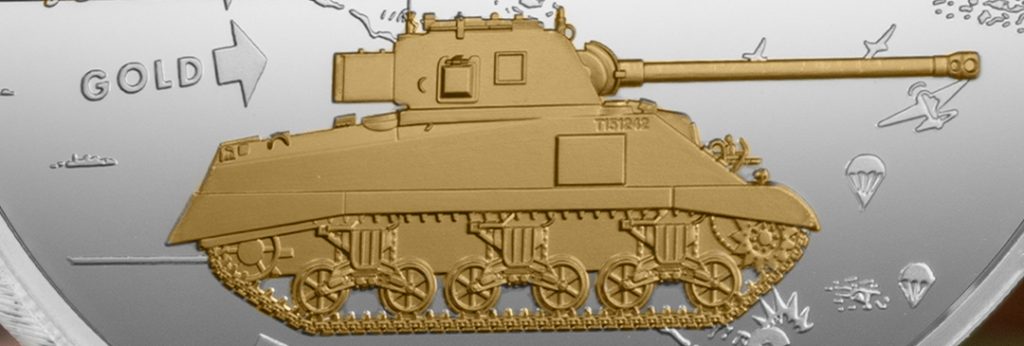
A veteran battleship with a vast history, HMS Warspite steamed into the waters off Normandy to unleash its formidable firepower. During the Normandy landings Warspite was the very first ship to fire upon German coastal defences with its heavy artillery.
Discover HMS Warspite’s Remarkable Story – Watch the HMS Warspite Video Now
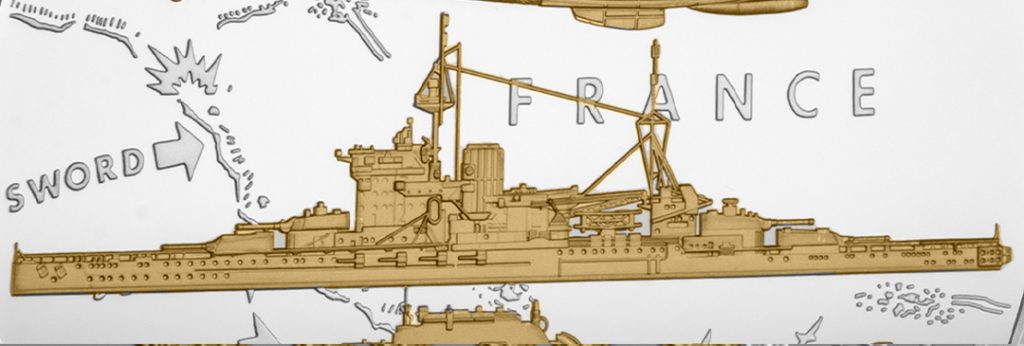
The Spitfire MK IX, a legendary aircraft synonymous with the Royal Air Force, played a crucial role in the Normandy landings. Designed for speed and agility, the Spitfire provided essential air cover during Operation Overlord.
Uncover more about the role of the Spitfire MK IX – Watch the Spitfire MK IX Video Now
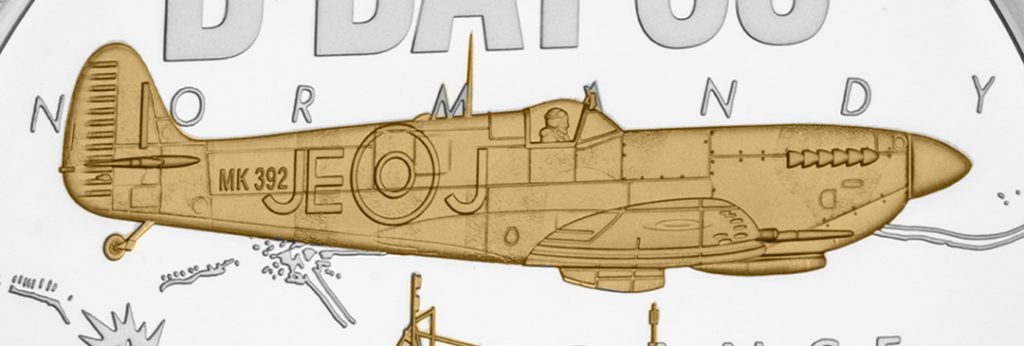
Map of Normandy/France:
The background design features a detailed map of Normandy, with a special focus on the historic beaches of Gold and Sword. These beaches witnessed some of the fiercest fighting on D-Day, as Allied forces sought to establish a crucial foothold on continental Europe. The map design highlights the strategic significance of these locations in the overall success of the Normandy landings.
The Spitfire Mk IX, HMS Warspite, and the Sherman Firefly Tank, along with the map of Normandy, come together on this coin design to tell a powerful story of unity, courage, and the triumph of good over evil.
Click here to view the brand new coin range commemorating the 80th anniversary of D-Day.
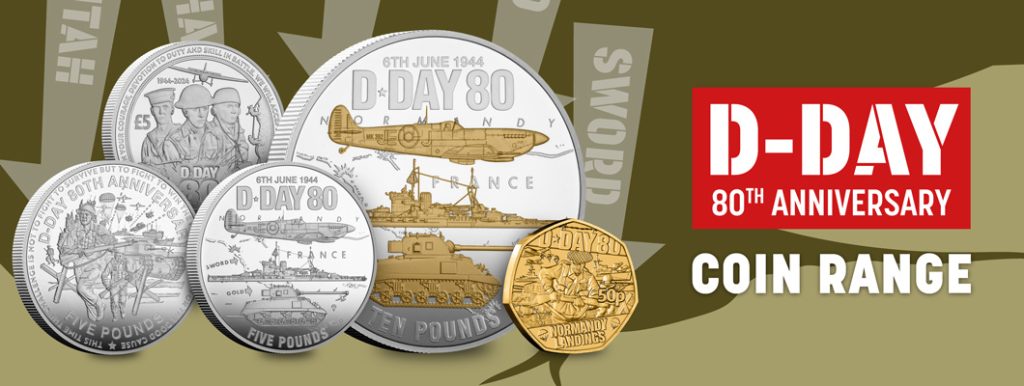
We strive for historical accuracy in our content. If you notice any inaccuracies, please let us know. Your feedback will help us maintain and improve the integrity and accuracy of our information.
Guardians of the Normandy Sky
Click here to view the brand new 80th anniversary of D-Day coin range featured in this video
The Supermarine Spitfire MK IX carved its name in history with its pivotal role during the D-Day landings on June 6, 1944. This aircraft was a marvel of British engineering, an advanced version of the famed Spitfire series, designed to match the German Focke-Wulf FW 190.
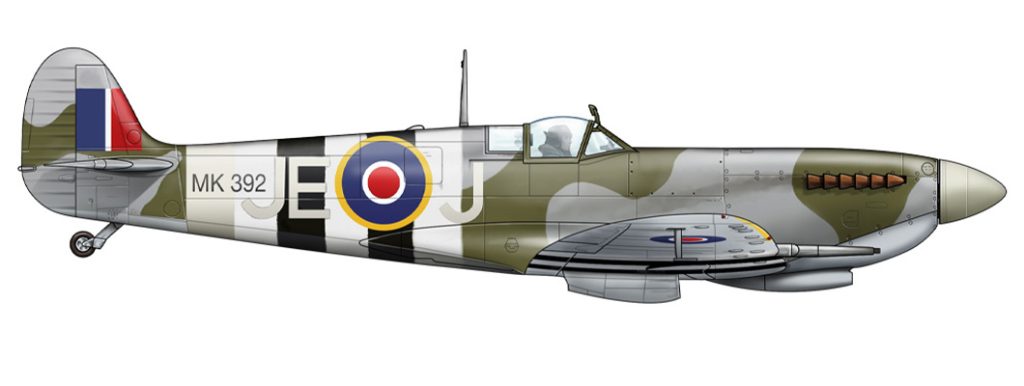
As the Allies undertook the monumental task of liberating Nazi-occupied Europe, the Spitfire MK IX soared above the beaches of Normandy, safeguarding the troops against enemy air attacks. Its iconic Merlin engine provided the power needed to dominate the skies at high altitudes, where dogfights with German fighters were a frequent challenge.
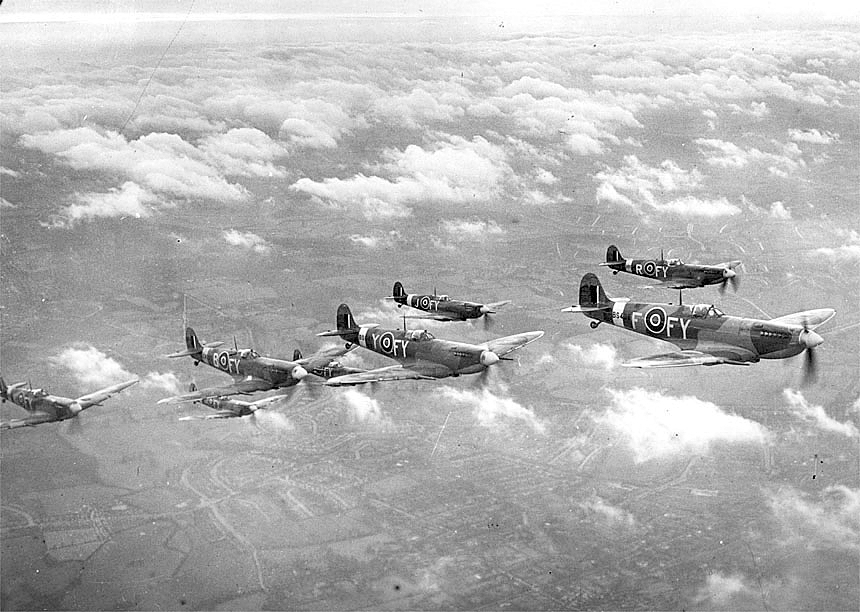
The Spitfire’s duties were not limited to aerial combat. The MK IX Spitfires were crucial in reconnaissance, capturing images of the battlefield that informed Allied strategy. They also strafed and bombed German defensive positions, disrupting enemy fortifications and support.
The presence of the Spitfire MK IX over the Normandy beaches was a reassurance to the Allied soldiers below and a testament to the aircraft’s enduring legacy. On D-Day, it was more than a fighter, it was a protector, an eye in the sky, and a symbol of hope.
Click here to view the other key elements featured on the D-Day 80th Anniversary coin design.
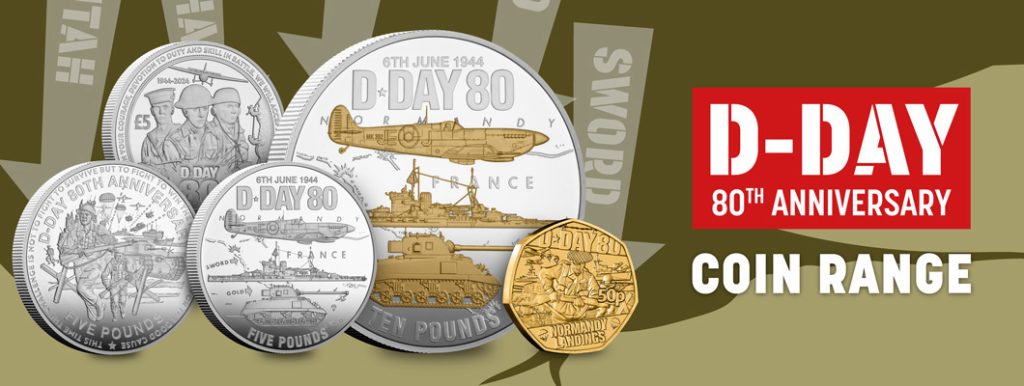
We strive for historical accuracy in our content. If you notice any inaccuracies, please let us know. Your feedback will help us maintain and improve the integrity and accuracy of our information.
